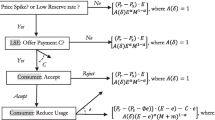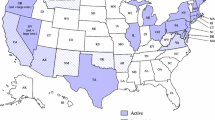Abstract
Given a hybrid electricity market structure, demand response (DR) in wholesale electricity markets depends critically on the choice of customer baseline. This paper reviews alternative customer baseline designs, focusing on administrative and contractual approaches. Administrative customer baselines have been developed over many years to provide estimates of the counterfactual consumption levels that would have prevailed without demand-response programs. However, experience suggests that this approach is vulnerable to opportunities for gaming and could result in illusory demand reductions. With full locational marginal price (LMP) payment, this approach imputes double-payment incentives that could induce excessive demand reduction undermining the efficiency of DR programs. Alternatively, a contractual customer baseline approach provides transparent rights and obligations for a robust framework that restores efficient DR under full LMP payment. As a retail rate design that provides two-sided contractual customer baselines, demand subscription service and DR programs form a much needed connection between the wholesale and retail markets in ways that promote price-responsive demand in a smart grid future.
Similar content being viewed by others
References
Borlick, R. L. (2010). Pricing negawatts. Public Utilities Fortnightly, August 14–19.
Bushnell J., Hobbs B., Wolak F. (2009) When it comes to demand response, is FERC its own worst enemy?. The Electricity Journal 22(8): 9–18
Chao H. (1983) Peak load pricing and capacity planning with demand and supply uncertainty. Bell Journal of Economics 14(1): 179–190
Chao H. (2010) Price responsive demand management for a smart grid World. Electricity Journal, 23: 7–20
Chao H., Siddiqi R. (1993) Why service differentiation? Why now. In: Oren S., Smith S. (eds) Service opportunities for electric utilities: Creating differentiated products, topics in regulatory economics and policy series. Kluwer, Boston/Dordrecht/London
Chao H., Wilson R. (1987) Priority service: Pricing, investment, and market organization. American Economic Review 77: 899–916
Chao H., Oren S., Smith S., Wilson R. (1986) Multilevel demand subscription pricing for electric power. Energy Economics 8: 199–217
Chao H., Oren S., Wilson R. (2005) Restructured electricity markets: A risk management approach. Electric Power Research Institute, Palo Alto
Chao H., Oren S., Wilson R. (2008) Reevaluation of vertical integration and unbundling in restructured electricity markets. In: Sioshansi P. (ed.) Competitive electricity markets. Elsevier, Amsterdam
Cicchetti, C., Hogan, W. W. (1989). Including unbundled demand-side options in electric utility bidding programs, Public Utility Fortnightly, June 8.
Crew M., Kleindorfer P. (1978) Reliability and public utility pricing. American Economic Review 68: 31–40
Crew M., Fernando C., Kleindorfer P. (1995) The theory of peak-load pricing: A survey. Journal of Regulatory Economics 83: 215–248
Doorman G.L. (2005) Capacity subscription: Solving the peak demand challenge in electricity markets. IEEE Transactions on Power Systems 20(1): 239–245
Doucet J. A., Roland M. (1993) Efficient self-rationing of electricity revisited. Journal of Regulatory Economics 5: 91–100
EPRI. (1986). Priority service: Unbundling the quality attributes of electric power. Electric Power Research Institute Report, EA-4851, Project 2440-2, November.
EPRI. (2004). Integrated engineering and economic operation of power systems. Electric Power Research Institute Report 1009483, Palo Alto, CA.
EPRI (2005), Electricity market transformation: A risk management approach, Electric Power Research Institute Report, Palo Alto, CA.
Faruqui F., Chao H., Niemeyer V., Platt J., Stalkopf K. (2001) Economics of California’s power crisis. The Energy Journal 22: 29–52
FERC. (2006). Demand response and advanced metering, Federal Energy Regulatory Commission Staff Report, Docket AD06-2-000, Washington, DC.
FERC. (2008). Wholesale competition in regions with organized electric markets, Order No. 719, 73 Fed. Reg. 64,100 (Oct. 28, 2008), FERC Stats. & Regs. P 31,281 (2008) (Order No. 719 or Final Rule).
FERC. (2009). A national assessment of demand response potential Federal Energy Regulatory Commission, Staff Report; prepared by The Brattle Group Freeman, Sullivan & Co Global Energy Partners, LLC, June.
FERC. (2010). Demand response compensation in organized wholesale energy markets, Notice of Proposed Rulemaking, Docket No. RM10-17-000, Washington DC, March 18 and August 2.
Hirst, E., Kirby, B. (2001). Retail-load participation in competitive wholesale electricity markets, January 2001, http://webapp.psc.state.md.us/Intranet/Reports/SU_CM_appendix_A.pdf (prepared for the Edison Electric Institute and Project for Sustainable FERC Energy Policy).
Hogan, W. W. (2001). Hearing on FERC: Regulators in a Deregulated Electricity Market, before the United States House of Representatives Subcommittee on Energy Policy, Natural Resources and Regulatory Affairs, August 2.
Hogan, W. W. (2009). Providing incentives for efficient demand response, Prepared for Electric Power Supply Association, Comments on PJM Demand Response Proposals, Federal Energy Regulatory Commission, Docket No. EL09-68-000.
Hogan, W. W. (2010). Implications for consumers of the NOPR’s proposal to pay the LMP for all demand response, Prepared for Electric Power Supply Association, Comments on Demand Response Compensation in Organized Wholesale Energy Markets, Notice of Proposed Rulemaking, Federal Energy Regulatory Commission, Docket No. RM10-17-000.
ISO New England. (2008). Docket No. ER08-538-000; Filing of Changes to Day-Ahead Load Response Program (February 5).
ISO-NE. (2009). Status Report on the Future of Price-Responsive Demand Programs Administered by ISO New England Inc. February 13. http://www.iso-ne.com/committees/comm_wkgrps/mrkts_comm/mrkts/mtrls/2009/feb202009/a2_iso_status_report_prd_draft_version_1_02_13_09.pdf
Joskow, P. (2001). California’s electricity crisis (vol. 17). Oxford Review of Economic Policy, Oxford University Press, Oxford.
Joskow P., Tirole J. (2006) Retail electricity competition. RAND Journal of Economics 37: 799–815
Kahn, A. E. (2010). Affidavit attached to Reply Comments of the Demand Response Supporters, FERC Docket No. RM10-17-000, August 30.
Lovins A. B. (1985) Saving gigabucks with negawatts. Public Utilities Fortnightly 115(6): 24
Oren S., Smith S. (1993) Service opportunities for electric utilities: Creating differentiated products, topics in regulatory economics and policy series. Kluwer, Boston/Dordrecht/London
Panzar J. C., Sibley D. S. (1978) Public utility pricing under risk: The case of self-rationing. American Economic Review 68(5): 888–895
Ruff L. (2002) Economic principles of demand response in electricity. Edison Electric Institute, Washington, DC
Sweeney J. (2002) The California electricity crisis. Hoover Institution Press, Stanford, CA
Wellinghoff J., Morenoff D. (2007) Recognizing the importance of demand response: The second half of the wholesale electric market equation. Energy Law Journal 28(2): 389–419
Wilson R. (1989) Efficient and competitive rationing. Econometrica 57: 1–40
Woo C. K. (1990) Efficient electricity pricing with self-rationing. Journal of Regulatory Economics 2: 69–81
Author information
Authors and Affiliations
Corresponding author
Rights and permissions
About this article
Cite this article
Chao, Hp. Demand response in wholesale electricity markets: the choice of customer baseline. J Regul Econ 39, 68–88 (2011). https://doi.org/10.1007/s11149-010-9135-y
Published:
Issue Date:
DOI: https://doi.org/10.1007/s11149-010-9135-y




